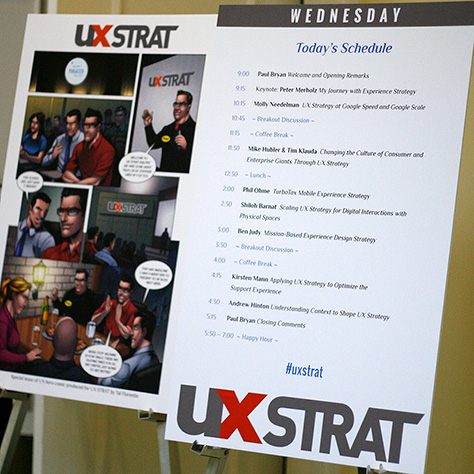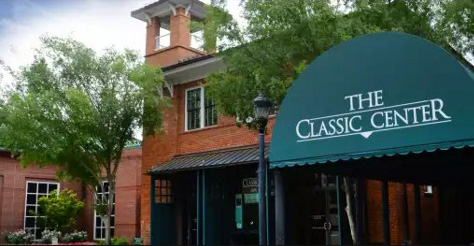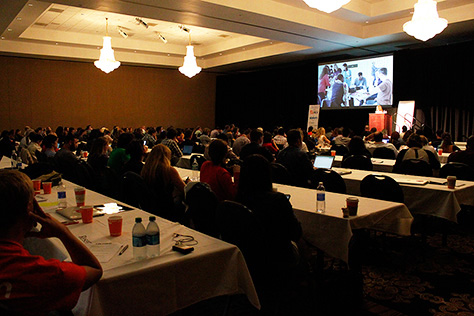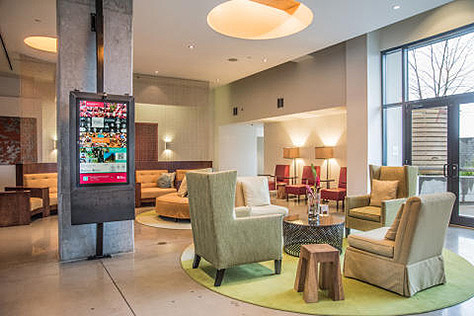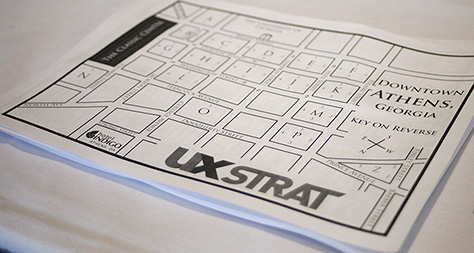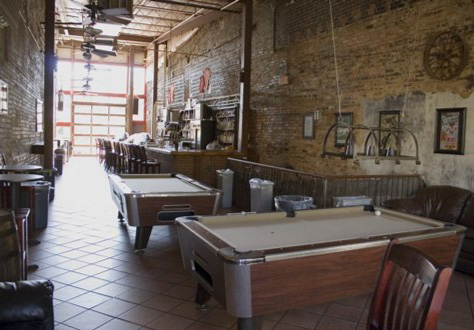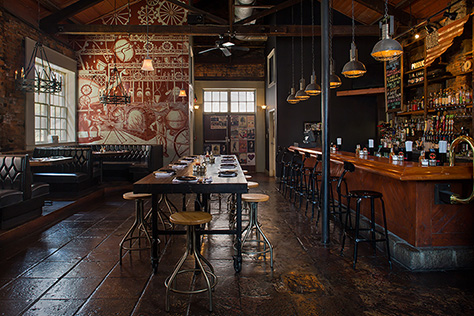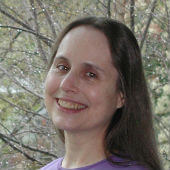Organization
This conference runs like a well-oiled machine. Paul Bryan, shown in Figure 1, is the organizer of UX STRAT. He and a team of volunteers, some of whom are shown in Figure 2, ensured everything ran smoothly in Athens. At UX STRAT USA 2015, everything from the speakers and content to the social activities were well thought out. In each successive year, UX STRAT gets progressively better for two reasons:
- Paul and his team apply their learnings from the previous year, which they glean by talking with attendees to find out how they’re doing.
- They experiment and try new things. Of course, experiments may succeed or fail, but nothing ventured, nothing gained. I commend their taking the risk of trying new things in an unceasing effort to make UX STRAT a better conference.
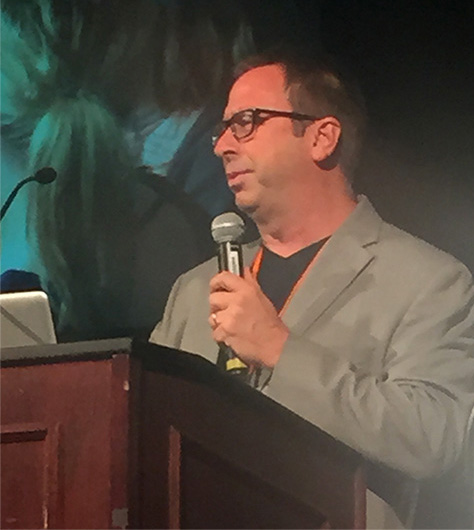
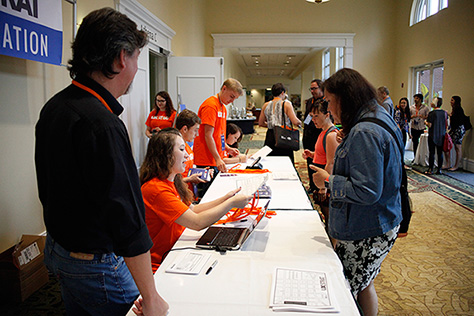
I’m really glad UX STRAT is sticking with its single-track format. The consistently high quality of the conference’s content makes this format work well. When all attendees have the same conference experience, it fosters conversations about that shared experience and makes it easier for attendees to get to know one another. This is especially important for new attendees.
One experiment in 2015 that I thought was a good idea, but less than fully successful in its execution was breakout sessions—for example, those shown in Figure 3. The breakout sessions weren’t on specific topics, there were’t enough rooms for all of the breakout sessions—some of which had too few participants to ensure a lively discussion—and attendees weren’t allowed to choose which breakout sessions they wanted to attend. Instead, attendees were assigned to specific breakout sessions—for example, session D—one in the mid-morning, another in the mid-afternoon, each day of the conference. Helpful volunteers ensured the breakout sessions stayed on schedule.
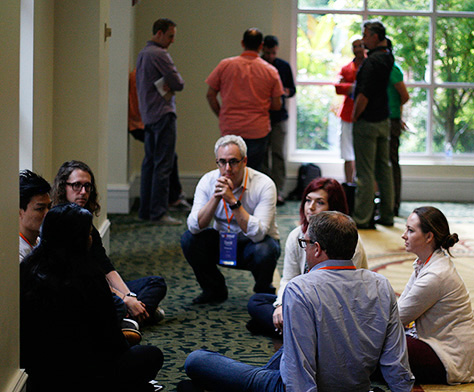
While some people told me they’d participated in well-facilitated, interesting discussions, I happened to land in some poorly facilitated, overly controlled, really boring discussions—at least they were to me. While facilitators who were also presenters were encouraged to ask questions relating to their talk, others were given a list of questions to ask participants in sequence, as follows:
- How does your company or agency manage customer touchpoints in terms of experience design?
- What are the key components of a customer experience framework?
- How are customer experience and user experience organized in your company?
- What are the connections or touchpoints between experience strategy and business strategy in your projects or company?
- Are there UX Strategists in your company?
- What role does analytics or big data play in experience design in your product or service design?
Note the assumption that participants work for a company, which isn’t the case for everyone. Only if these questions didn’t elicit good responses from participants were facilitators then supposed to ask their own questions. On the last day of the conference, Paul asked me to pinch hit for a facilitator who wasn’t able to lead an afternoon session. After my prior experience of the breakout sessions, I didn’t feel inclined to follow the predefined format. Instead, since we were nearing the end of the conference, I asked participants what ideas from the conference would be particularly valuable to them in their own work, and the group became engaged in discussing those ideas.
The problem with not letting attendees choose breakout sessions by topic and/or facilitator is that they may end up in sessions in which the discussion relates to neither their work nor their interests and with people with whom they have little in common. If these breakouts had been birds-of-a feather sessions, they would have provided more opportunities for attendees to meet people with whom they have shared experiences and interests. I wish I’d been able to attend more of the breakout sessions facilitated by presenters—particularly those whose topics paralleled my own interests. At least, then, I would have known the topics of discussion would be engaging.
